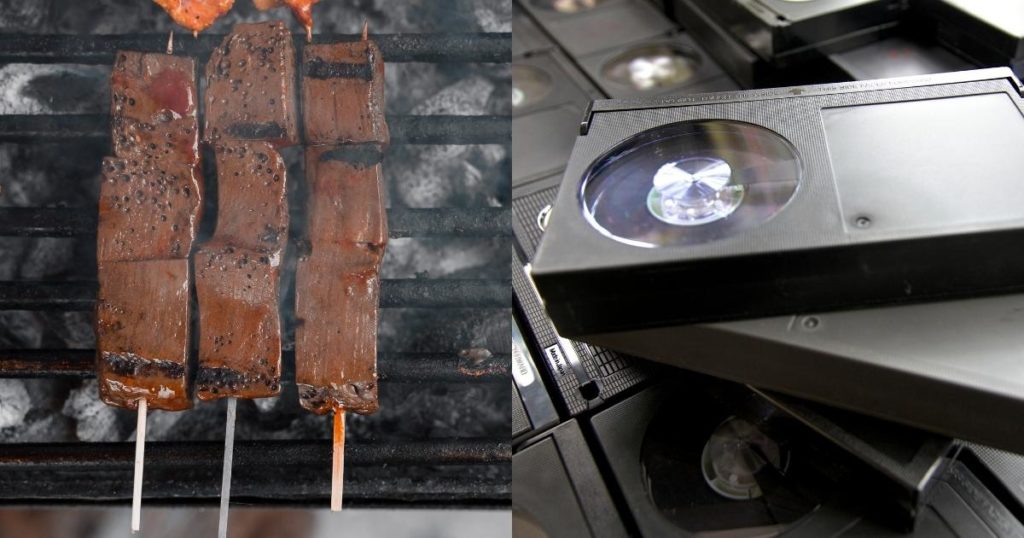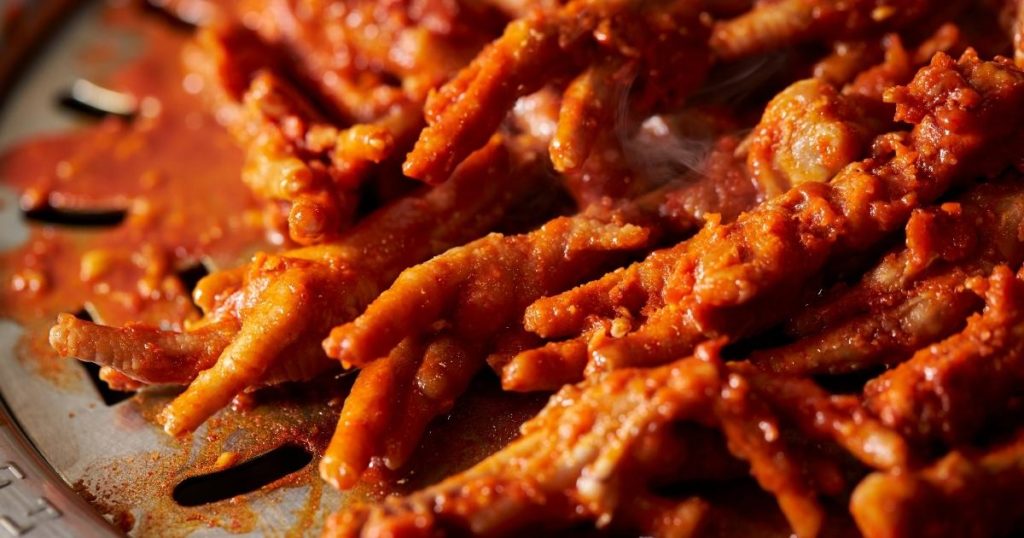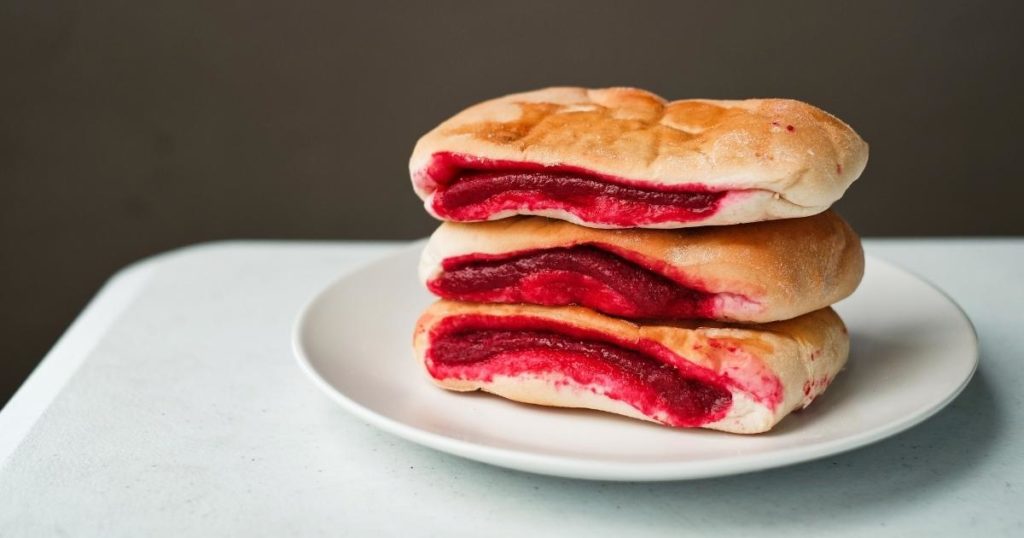Well, that’s what we’re going to discuss in this article—keep on reading!
So… what IS bulalo?
Bulalo is one of the many traditional Filipino soup dishes that has beef as its main ingredient. There are many variants of this beef soup dish, but generally, making it consists of boiling beef shanks and marrow bones for several hours. Doing this lets you extract all the flavor and tenderness from your ingredients.
When you’re done with the process, the result is a robust broth that is packed with rich, savory goodness, thanks to the fall-of-the-bone tender meat and vegetables.
What is bulalo called in English?
In English, bulalo is “bone marrow stew” or “beef bone marrow stew.” Doesn’t exactly roll off of the tongue nicely, right?
Why is it called bulalo?
Filipinos like to keep things simple, which is probably why they just named this Filipino dish after its main ingredient: beef shanks. Beef shanks are a special cut of beef that includes both the leg bone and the meat around it.
Because the legs are used a lot, beef shanks can be tough and dry. However, inside the bone, there’s a juicy treat of collagen and fat-filled marrow. To bring out the amazing flavors, bulalo is cooked slowly in moist heat.
What is bulalo’s history?
So where did bulalo come about, exactly? Or who started making bulalo soup?
Well, according to Yummy.ph, you can trace the origins of this Filipino beef to the Southern Luzon area, specifically in Batangas. Apparently, back in the 16th century, Spaniards and Chinese traders brought cattle to the Philippines, and made Batangas all about cattle trade and a source of plenty of beef dishes. That’s probably the reason why Filipinos generally associate Batangas with bulalo.
Lately, though, Tagaytay is now also known for this beef recipe, not just for buko pie as pasalubong. It makes sense, since Tagaytay is nearer, also has a colder climate, and has a nice view of the Taal volcano.
Of course, now, you don’t have to go far away to eat some bulalo. You can buy this in various restaurants or even cook bulalo at home.
What are the ingredients of bulalo?
To make one of the best soup recipes ever, you’ll need the following ingredients aside from beef shanks:
Marrow Bone
As mentioned above, marrow bones are an essential component of bulalo. These bones, rich in collagen and fat, contribute to the richness and depth of flavor in the soup. When simmered for an extended period, the marrow melts into the broth, resulting in a decadent taste that will keep you coming back for seconds!
Sweet Corn
Sweet corn is a popular addition to the soup, thanks to the sweetness of the corn complementing the savory flavors of the broth and meat. You’ll also get an additional delightful crunch and texture!
Bok Choy
Bok choy, a leafy and vibrant green vegetable, is often added to bulalo towards the end of the cooking process. In the Philippines, it’s known as pechay. The crisp texture of its leaves also provide a refreshing contrast to the rich and meaty elements of the soup.
Other Ingredients
Since this is the Philippines, we’re not content with just the usual bulalo recipe ingredients. That’s why you might spot variations in bulalo, like adding black pepper, bagoong alamang, bay leaves, onion leeks, green onions, garlic, and Chinese cabbage. These ingredients all add complexity and depth to the flavor profile.
What is the difference between bulalo and nilaga?
So if you look at the ingredients, you might wonder how bulalo is different from other beef dishes like beef nilaga and cansi. Well, one major difference of bulalo and nilaga is the kind of beef used—nilaga uses beef chunks.
As for cansi, while it is also made from beef shank and bone marrow, it is slightly soured with fruits. It’s actually cooked sinigang na bulalo at times. The soup is also different in color and is cooked with ingredients like tomatoes, patis or fish sauce, and even siling labuyo.
How do you cook bulalo?
Cooking bulalo is a slow and meticulous cooking process. The broth is simmered for hours, allowing the flavors to meld together and intensify. The long cooking time ensures that the beef becomes tender and the flavors reach their full potential.
Of course, before anything else, make sure to clean the beef shanks first by boiling them for 10 minutes. After that, submerge the clean shanks in water in your cooking pot over medium heat. When it boils, remove any scum that rises to the surface.
When the broth clears up, you can place the smaller ingredients. This is where patience comes in: you’ll have to let it simmer for hours, or at least until the meat falls off the bone. That means it’s tender.
You can then add the corn and bigger ingredients, then cover your pot. Let it simmer until all ingredients are softer, then you’re done!
How do you serve bulalo?
For best results, serve this soup recipe hot and freshly made. Speaking of best, eat it with hot rice!
Are there any bulalo variations?
Actually, there are more than just the usual classic bulalo. You can discover them in The Bailiwick Academy’s class by Chef Anthony Ang: WOW, Bulalo!
When you enroll, you’ll discover Chef Anthony’s methods for making THREE recipes out of a single cut of meat:
- Real Beef Bulalo Soup, his version of bulalo beef recipe. You’ll get a rich and savory broth with tender chunks of meat that melt in your mouth with every spoonful. You’ll understand why this Filipino classic is a beloved favorite!
- Kalderetang Bulalo, a robust and fiery fusion of bulalo and beef kaldereta. You’ll get a delicious mix of spices and vegetables that goes well with the succulent meat.
- Sizzling Bulalo with Gravy—yes, a sizzling bulalo dish is possible! Sear the meat to perfection and pour some thick gravy over it too! We bet you’ll get more than one bowl of rice for this!
And whether you’ve been cooking for a long time, or you just want to start cooking bulalo at home, this course is for you. Just follow Chef Anthony’s cooking tips and you’ll be well on your way to bulalo success.
You can even start a food business with this class—make your store be the NEW bulalo destination! Sign up at The Bailiwick Academy today now and cook up some today!
Final Thoughts
There you have it: a peek in to the wonderful world of bulalo! As we mentioned above, when the rainy season hits the Philippines, nothing beats this hearty and comforting soup dish with its fall-off-the-bone tender meat, flavorful broth, and delicious mix of ingredients.
And whether you enjoy the classic bulalo or try out the other bulalo beef recipes, you’re in for a mouthwatering adventure!
So why wait? Grab your ingredients, cook up a storm, and make your taste buds dance with joy!
—
Keep coming back to The Bailiwick Academy blog for more kitchen tips, tricks, and much more!
]]>Well, that’s exactly what we will talk about in this blog.
Key Takeaways
TL;DR? Here’s a quick summary of what to expect from this article:
- When planning a catering menu, it’s important to have a specific target market in mind. Focus on that one market so that you can memorize and perfect their needs, which helps you build a good reputation and gets you similar work.
- Pricing isn’t just about the food–consider also logistics, cost of food, and other business costs.
- Do further research and education to make better business decisions about running a catering events business.
A Quick Disclaimer About This Article
While we will discuss what to consider when planning a catering menu, this isn’t a deep dive into the topic. A food and beverage business or how to plan a catering business needs more consideration and information than just one blog article. So while we can give you some things to consider, we’d also encourage you to learn more for yourself.
For example, one of the courses at The Bailiwick Academy is Branding 101. Another is Bakery Operations. These and other courses might help you with how to create a catering business plan and make better business decisions.
In short, while this is a quick overview, this is not an article that’s an end-all-be-all about planning catering menus. Also, these won’t be in any particular order, but you have to really consider all of these, as these are important for a successful catering menu or business.
Got it? Good.
How To Plan A Catering Menu: Who Do You Want to Serve?
One thing you have to remember is that in business, you have to have a specific target market. You need to decide on who you want to serve primarily. This also applies to having a catering business.
Let’s say you do decide to enter catering. Do you want to serve personal events like weddings, birthdays, and baptisms? Or would you rather look for a catering event for business people weekly? After all, how to plan catering for a wedding differs from how to plan catering for an event in a corporate setting.
The question doesn’t stop there, though. If you decide to serve weddings, would you rather serve high-end weddings? Or would you be happy serving weddings that are budgeted?
Again, the people in these events will be looking for different things. And if you read our feature on Chef Joey Prats, you’d know that he recommends focusing on one product. The same advice counts for the target market: focus on one.
When you focus on one market, you can memorize and perfect their needs and expectations. Doing this will help you build a good reputation and get you more work for similar people. That’s always a good thing, agree?
How To Plan A Catering Menu: Consider The Logistics
Now that you know who you want to serve, the next thing to consider is the logistics, as these will factor into your costs. As we said, you shouldn’t only consider menu items!
Let’s go back to the target market. Say you’ve decided to focus solely on corporate events. Will you accept only certain corporate events, or will you take on all of them?
For example, what if you’re located in Laguna, and a potential client wants to get you for a corporate event in Pampanga? Will you be able to accommodate their request?
Aside from the location, here are some other logistical considerations:
- Staffing – You should determine the number of staff needed, their roles and responsibilities, and their schedules. This includes chefs, servers, bartenders, and event coordinators. Remember, the more you want to give to your clients, the more people you’ll likely need!
- Transportation – Transportation isn’t only considered if, say, you want to run a food truck. After all, if you’re going on location for any type of event, you should be able to transport the food, equipment, and yourself and your team to the venue. You should also determine the truck size you need or if a van will suffice.
- Equipment – If you plan to enter wedding event catering, you should know that you won’t be able to survive on just one kind of chair and decoration. You have to be able to give your possible clients options that will fit their wedding themes. Catering for corporate events is more forgiving, but these clients will still eventually look for options from you. Consider also that catering can come in different forms: buffets, food stations, seated and served, stand-up cocktails, and even outdoor picnics. Do you want to be able to serve all that or just some?
How To Plan A Catering Menu: Pricing
Ever wonder sometimes about the catering cost per person, especially if you feel like it’s too high? Well, here are some factors to consider in how to price a catering menu.
- Cost of ingredients – This is one important factor in pricing. After all, depending on the market you choose to serve and the types of food they want, you could run up a hefty bill just buying the ingredients alone! Of course, you’re going to charge that to the client. Include also if you’ll serve an alcoholic beverage per person, if they have appetizers, and pretty much anything food related.
- Labor costs – You will also have to factor in the salaries of your chefs, servers, and other staff. In the future, if you add more people, even those not necessarily go with actual events, include those too! They do help with your business, after all. You might even have to raise prices to serve people better.
- Your equipment and logistical costs – How much did you buy your equipment, such as chairs, linens, and tools for food safety? How much are your transportation costs? Insurance? Factor those in as well.
- Your markup – All these mentioned above are just your operational and overhead costs. If you don’t add in how much you want to make per event, you’re not going to make money. And you have to–after all, businesses survive because of profits, not because of anything else. You have to make money.
Once you have all these, divide the cost of the event by the number of guests, and that’s where you’ll get the cost per person. It is important to note that the cost per person will vary depending on the menu, the level of service provided, and other factors.
How To Plan A Catering Menu: Planning The Food
Oh, look, we’re finally getting to the food! Why did we place this last? Well, it’s probably the easiest for you, especially if you’ve been making food for a long time already.
After all, you’re reading this because you’re thinking of getting into catering. And that means you already have a preference for your menu, correct?
And it does go back to Chef Joey’s advice about one first. So what kind of food or cuisine do you want to serve? Sure cuisine that will sell is Filipino food, but you can also offer other ones, like Korean and Spanish.
You can even choose to niche down further and offer only keto catering. However, how to plan a keto menu is much more complicated than the usual kinds. That’s something to consider as your price might go up!
Your price will also go up if you want to give clients options to serve their guests who have special dietary restrictions.
But once you’ve decided on the food you plan to serve, that’s when you can get to the nitty-gritty. You can customize courses, make avant-garde versions of the cuisine, and so on. It will really depend on your target market and what would appeal to them.
Final Thoughts
Ready to get started on making your own catered event menu? Just consider all the following that we discussed in this article. Remember to consider who you want to serve and all the costs that you will incur, and make sure you’ll profit! By doing so, you’ll be well on your way to not only building a catering menu that will impress your guests but you’ll also have a successful catering business that will last a long time!
Speaking Of Menu Choices…
If you’ve decided to go with our suggestion of serving Pinoy food to start, The Bailiwick Academy has a class that’d be perfect for you to start: Chef Anthony Ang’s Pinoy Handaan!
In this class, you’ll learn to make three classic Filipino party dishes that are restaurant quality using Chef Anthony’s recipes:
- Pancit Overload
- Crispy Pata
- And the very packed Lumpiang Shanghai!
Whether you’re catering for a wedding, a corporate event, or even a simple occasion at home, you can be sure that these menu options will make for a menu that will impress! That’s especially since this class has simple, clear and easy-to-follow instructions that will let you master the dishes in no time!
So what are you waiting for? Sign up at The Bailiwick Academy today and get started planning your perfect Filipino food menu by enrolling in this class!
—
Keep coming back to The Bailiwick Academy blog for more kitchen tips, tricks, and much more!
]]>Well, maybe not exactly weird, more of funny. It’s a guarantee you’d find the names funny especially if you understand Tagalog or Filipino or if you have picked up some because you have lived in the Philippines for a long time.
But if you can’t, don’t worry – that’s what this article is for! We’ll take a look at nine of these names, explain why they’re funny in the Filipino context, and what kind of food they actually are.
And not to worry: they’re not ALL (some definitely are) bizarre food containing brain and liver or something like that. They’re also not some strange food combinations. In fact, once you get to know what they are, you might be itching to try one, two… or even all!
Let’s get to it, shall we?
Weird Food Name in the Philippines 1: Sundot Kulangot
If we’re talking about funny food names in the Philippines, this might be one that takes the cake. See, “kulangot” means “booger” in Filipino.
Who wants to eat booger? Definitely not any sane person!
But contrary to its name, it’s not one of those exotic Filipino dishes you may have heard of. Sundot kulangot is basically a snack or dessert that hails from Baguio. It is composed of glutinous rice, coconut milk, and brown sugar.
The ingredients are mixed and placed in wooden orbs, held together by red paper. The wooden orbs are then placed between bamboo sticks that are tied together to form a sort of tube.
To eat this treat, you get one ball, cut it in half, and poke (“sundot”) your finger into the half, like you’re picking your nose. Sure, you can use a little spoon or a stick to poke into the half and eat the soft and sweet dessert, but it’s funnier thinking that you’re picking your nose and eating the booger you got, right?
Just like some of us used to do as kids – whether we admit it or not.
Weird Food Name in the Philippines 2: Betamax
If you grew up in the 70s, you’d know what a Betamax is. For those who were born much, MUCH later, let us explain.
A Betamax is a tape that contains a video. Think of it as the earlier version of VHS tapes, which is the video format that came before VCDs, DVDs, and BluRay discs. We’re pretty sure you know what the last three are, right?
With us so far? Good. Now, what does Betamax have to do with food?
Well, it’s simple. Betamax the Filipino street food looks like Betamax the tape. And that’s where the name came from.

Right: Betamax video tape
See the resemblance?
And if you’re wondering what Betamax the food is, well, it’s a street food made from chicken blood or pork blood. People make this by extracting blood from the animal, which then cools down, gets thicker, and becomes gelatin-like. That’s how vendors cook it.
Wander around any Manila, Philippines city and you’ll find this popular street food being served especially during merienda time. Don’t knock it until you’ve tried it, especially once you’ve dipped this skewered food in vinegar with chilies.
You might end up getting this for drinking sessions, too!
Weird Food Name in the Philippines 3: Putok

If you’re a regular blog reader, you’ve encountered this Pinoy bread before. Just to recap, Putok is not a weird food name – more of a funny one. You see, in the Filipino language, when someone says you’re “amoy putok,” it means you smell really bad.
Isn’t that such a nice visual imagery?
But don’t worry. The word “putok” can also mean explosion, as in volcano explosion. And that’s the more accurate translation for the description of this bread – check out the top part.
Looks like a volcano, right?
And when you take a bite, we promise that there will be nothing stinky. What you’ll get instead is a yummy, sugary soft or crunchy bread, depending on where you buy it.
And the white stuff on top? That’s sugar – not anything related to stopping body odor.
Weird Food Name in the Philippines 4: Adidas

Would you say using chicken feet as a chicken dish is weird? Well, weird food or not, in the Philippines, the name is undoubtedly weird AND funny.
Yes, people call the chicken feet food “adidas.” As in a reference to the sports brand adidas. Why though?
Well, if you’ve seen the trefoil logo of the brand, you’d have to admit that this Pinoy food DOES look like the logo.

Plus, if you think about it, adidas is a brand commonly associated with footwear, right? So, you know… footwear, chicken feet… see the relationship?
Think about that next time you lace up your sneakers.
Weird Food Name in the Philippines 5: Pan de Regla

Of all the weird food names in the Philippines, this is probably the weirdest. Pan de Regla basically means “period bread”, as in the monthly visitor period. It’s in reference to the color red in the middle (although depending on who makes it, it can be a different color like purple or green).
Period bread doesn’t sound so appetizing, does it?
But if you were expecting some exotic food of the Philippine cuisine, well, we hate to burst your bubble, but it’s just bread made with some bright food coloring. It’s great for a snack or for breakfast, though, with its sweet taste and very soft texture.
It’s also called “kalihim” or secret bread, due to the fact that bakers use leftover bread to make this as the secret ingredient.
This bread also has a lot of weird food names aside from the two mentioned above, like:
- Innocent Kabukiran (We don’t think we want to know or explain this!)
- Balintawak
- Pan de Pula (literally red bread)
- Lipstick (obviously)
- Floor Wax bread (as in reference to the red Star Floor Wax)
- Ligaya (happiness – maybe because it looks like a very happy bread?)
- Alembong
- Bukirat (Again, nothing we want to explain!)
Weird Food Name in the Philippines 6: Lambingan Bread
“Lambing” is showing affection in Filipino. So how exactly is this bread related to affection? Does it give you affection or something?
Talk about weird food names in the Philippines.
If we had to make a guess, it’s because it’s a soft, cookie-like sandwich? And since the two sides are held together by butter, it’s like they’re showing affection to one another?
We also guess it’s probably why another name for this is Double Buddy.
Well, whatever the reason this got the name, the softness, the butter, and the desiccated coconut all over the sandwich will give you plenty of reason to eat one.
You probably won’t stop at one, either.
Weird Food Name in the Philippines 7: Kababayan

Like the Putok bread, you’ve encountered this before in our previous blog post. “Kababayan” means fellow countryman, but this is not one of those exotic Filipino dishes you might have heard about.
Yes, that means you won’t be committing cannibalism or eating any Filipino person. What you are eating instead is simply a sweet muffin made in the Philippines, despite the weird food name. The name is simply a reference to the hat (salakot) Filipinos used to wear before – exactly what the bread looks like.
Why they simply couldn’t have called it salakot bread, we don’t know. But what we do know is that we have a class to make kababayan bread – check it out!
Weird Food Name in the Philippines 8: Soup Number 5
Maybe we should have made this item number 5…
Sorry, we got lost a bit there. Anyway, what the heck is Soup Number 5?
Well, this is definitely one of the bizarre Filipino foods you were looking for in this list (if you were, at least). Did it being one of the weird food names in the Philippines give you a clue?
To answer your question, Soup Number 5 is an exotic Filipino soup. It is composed of the bull’s penis and the testes.
Talk about one of the dishes to challenge your taste buds, eh?
Apparently, Soup Number 5 is a favorite among Pinoys during drinking sessions. It’s also apparently great for curing hangovers as well as acting as an aphrodisiac – you know, getting the physical capabilities of a bull.
But why the name?
Well, according to Atlas Obscura, the popular story is that restaurants labeled this soup as a mystery soup. They would serve chicken, pork, beef, and seafood soups, but leave Soup Number 5 obscure. Whether it was a marketing tactic or it’s a way to not scare off customers, we’re guessing it worked, since people are still eating this exotic Filipino food.
Weird Food Name in the Philippines 9: German Chocolate Bread
Okay, so maybe “German Chocolate Bread” doesn’t exactly fit the “weird food names in the Philippines” category. But it’s still weird and funny. Why, you ask?
Well, it’s because of the name itself. As Chef Jimbo de Panadero mentioned in his live session with us, this bread was made by people from Visayas, so there’s nothing German about it.
Talk about weird Pinoy names.
If you called it by its other names like pan de choco or pan de chocolate, that would make more sense, right?
In any case, if you do have the opportunity, you should definitely try this soft, chocolatey bread – enjoy that crunchy streusel topping!
Want to try some delicious but weird Filipino-named food?
These are just some of the funny and weird Filipino food names. There are plenty more that we haven’t included in the list. And like we said about all the others on this list, these Filipino foods are very much worth trying – they’re pretty good!
Speaking of which, The Bailiwick Academy gives you the chance to not only try some of these weirdly-named foods… but to make them for yourself too! Check out our latest class with Chef Jimbo de Panadero: Panaderia Favorites 2!
Because you loved Panaderia Favorites 1, Chef Jimbo decided to make a part 2! In this latest class you’ll be making the following:
- Kalihim bread (otherwise known as Pan de Regla)
- German Chocolate Bread (which, again, are made by Filipinos)
- Double Buddy Bread (also known as Lambingan Bread); and
- Bonete, another hat-like bread like Kalihim, but all buttery!
We’re sure that making these bakery favorites will make you take plenty of trips down memory lane as you recall the simpler, good old days when you were just a kid, wouldn’t you agree? Plus, you’ll find yourself chuckling as you recall the names, making this class a doubly enjoyable experience.
Like with all our classes, you’ll get a detailed step-by-step instructional video and a support workbook. You’ll be able to recreate these classics easily in your very own kitchen. Enjoy them or add them to your food business menu.
Well, what are you waiting for? Sign up at The Bailiwick Academy today and start making these four delicious breads today!
—
Keep coming back to The Bailiwick Academy blog for more kitchen tips, tricks, and much more!
]]>